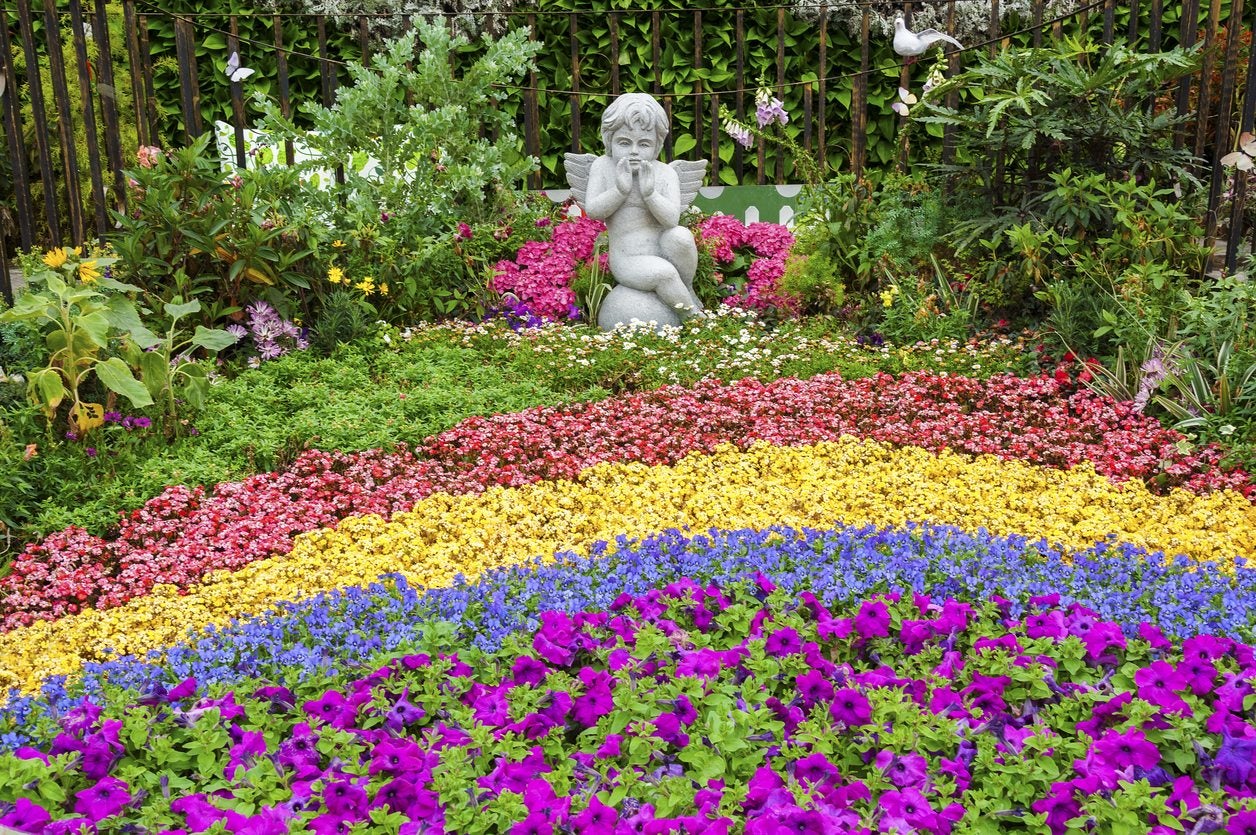What Is Color Blocking: Tips On Color Blocking With Plants


We all want dramatic curb appeal in our landscapes. One way to accomplish this is to use brightly colored, eye-catching plants. The problem with adding too many bright plants is that it can quickly turn from “eye-catching” to “eyesore,” as too many of these colors can clash and become uncomplimentary. To avoid this, you can use color blocking in the garden. What is color blocking? Continue reading for the answer.
What is Color Blocking?
A few years ago, I did a backyard garden design for a retired art teacher. Her request was that the spectrum of the rainbow be displayed along the lot line of her backyard. Starting with red flowers, I used roses, quince, lilies, and other plants with shades of red for this part of her color-block garden design. Next to them, I placed plants like gaillardia, poppies, and other roses with red and orange shades. The next flower garden color schemes included orange flowering plants, then orange and yellow, and so on, until she literally had a rainbow made from plants along her backyard. This is an example of color blocking. Color blocking is simply using several different plants of one color or complementary shades to create an eye-catching effect.
Color Blocking with Plants
Complementary colors are colors that are opposite one other on the color wheel, such as orange and blue. Then there are the harmonious analogous color schemes, which are found next to each other, like purple and blue. In a blue and purple flower garden color scheme, for instance, you could mix plants like:
Yellow and orange are also common shades for color blocking in the garden. Yellow and orange blocks may include plants like:
Lavender and pink can be used together for color blocking, or pinks and reds. White is also a color that can be used for a dramatic color blocking effect. Color blocking in the garden with white might include:
At first, it may seem boring to use a block of one color (monochromatic), but when you realize all the different shades and textures of these colors or complimentary colors, you'll see that a color block garden design becomes anything but boring. You can even create your own rainbow by using blocks of individual colors that fade into the next as I previously mentioned or choose a pattern effect like a quilt. The ideas are endless.
Gardening tips, videos, info and more delivered right to your inbox!
Sign up for the Gardening Know How newsletter today and receive a free copy of our e-book "How to Grow Delicious Tomatoes".